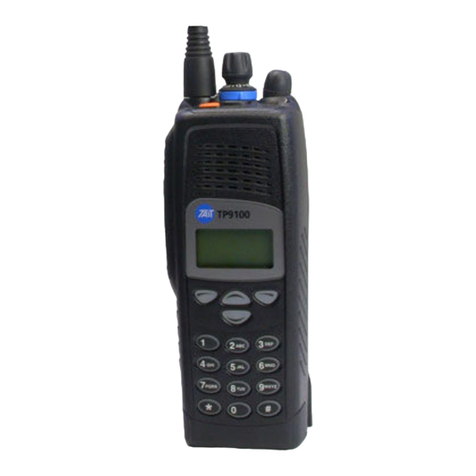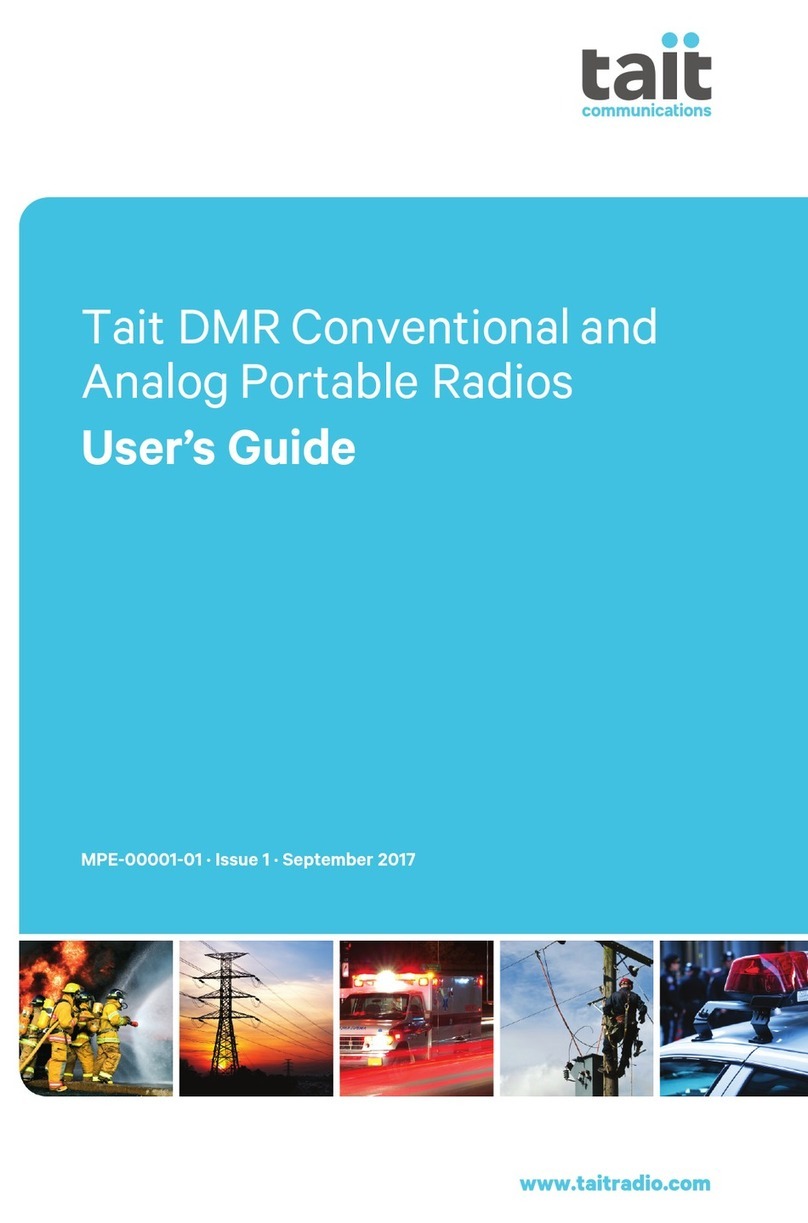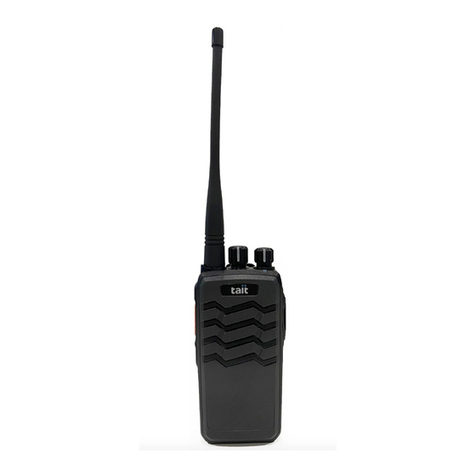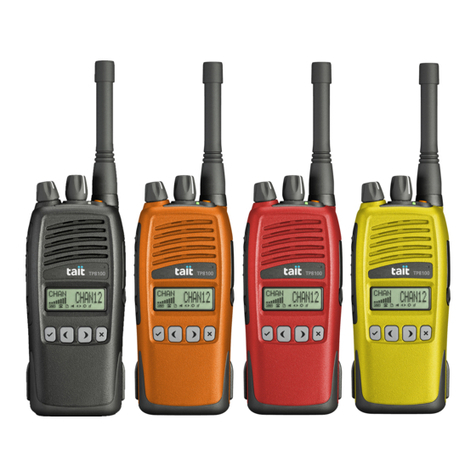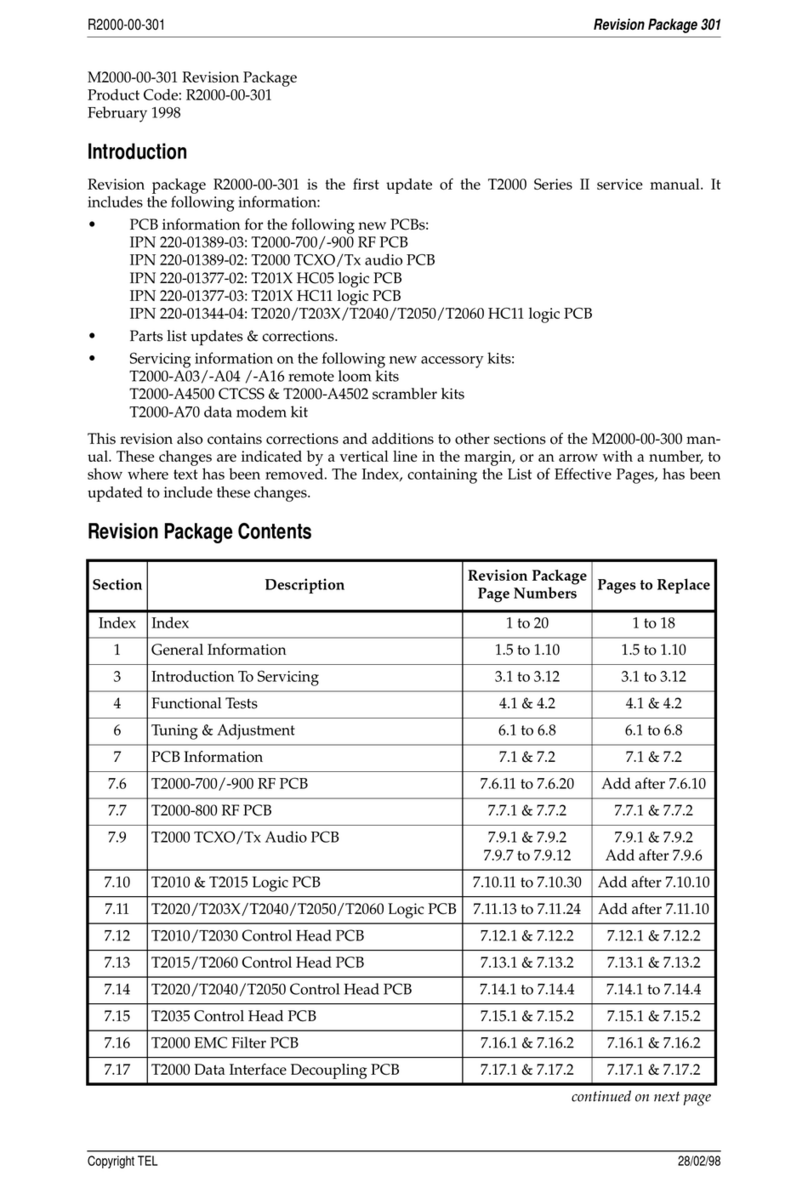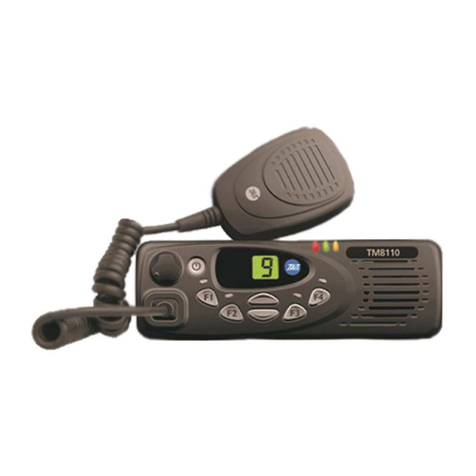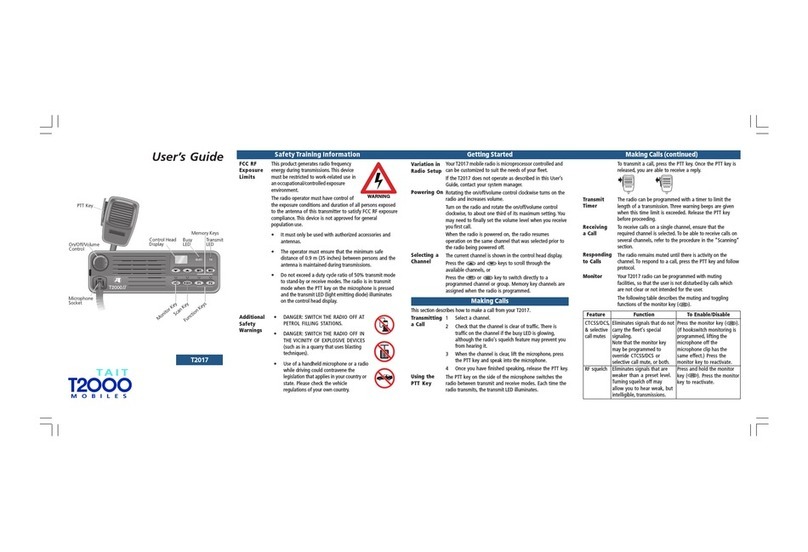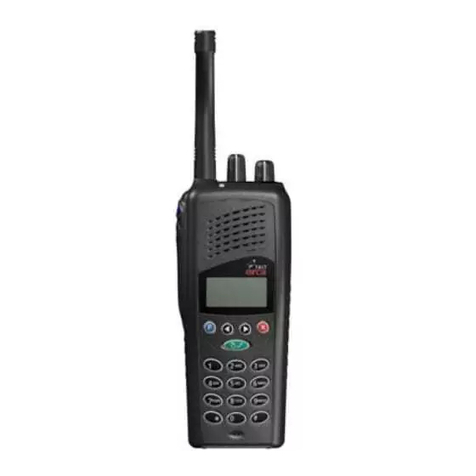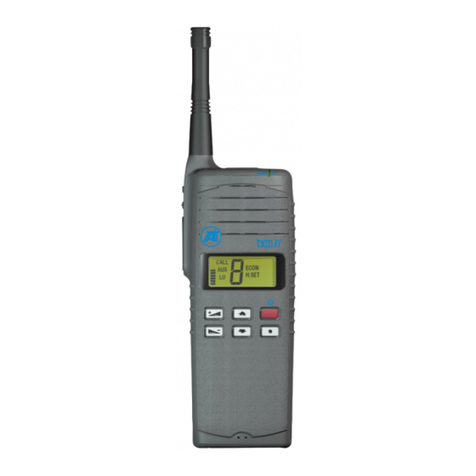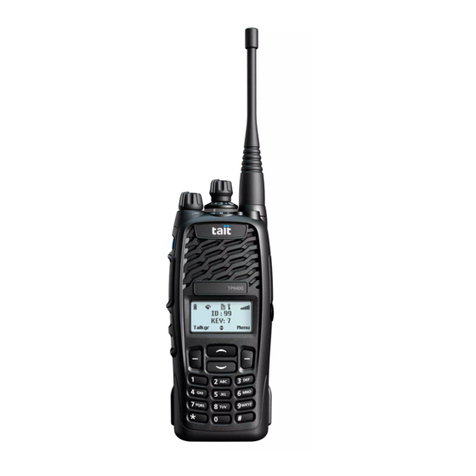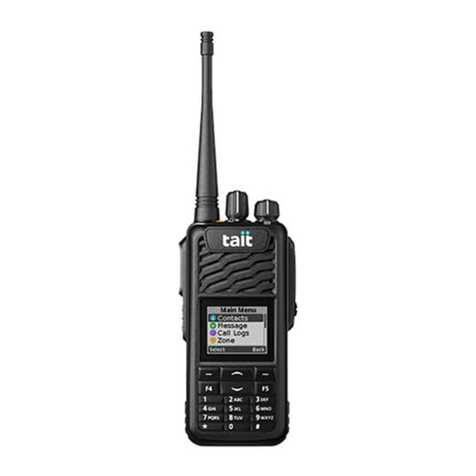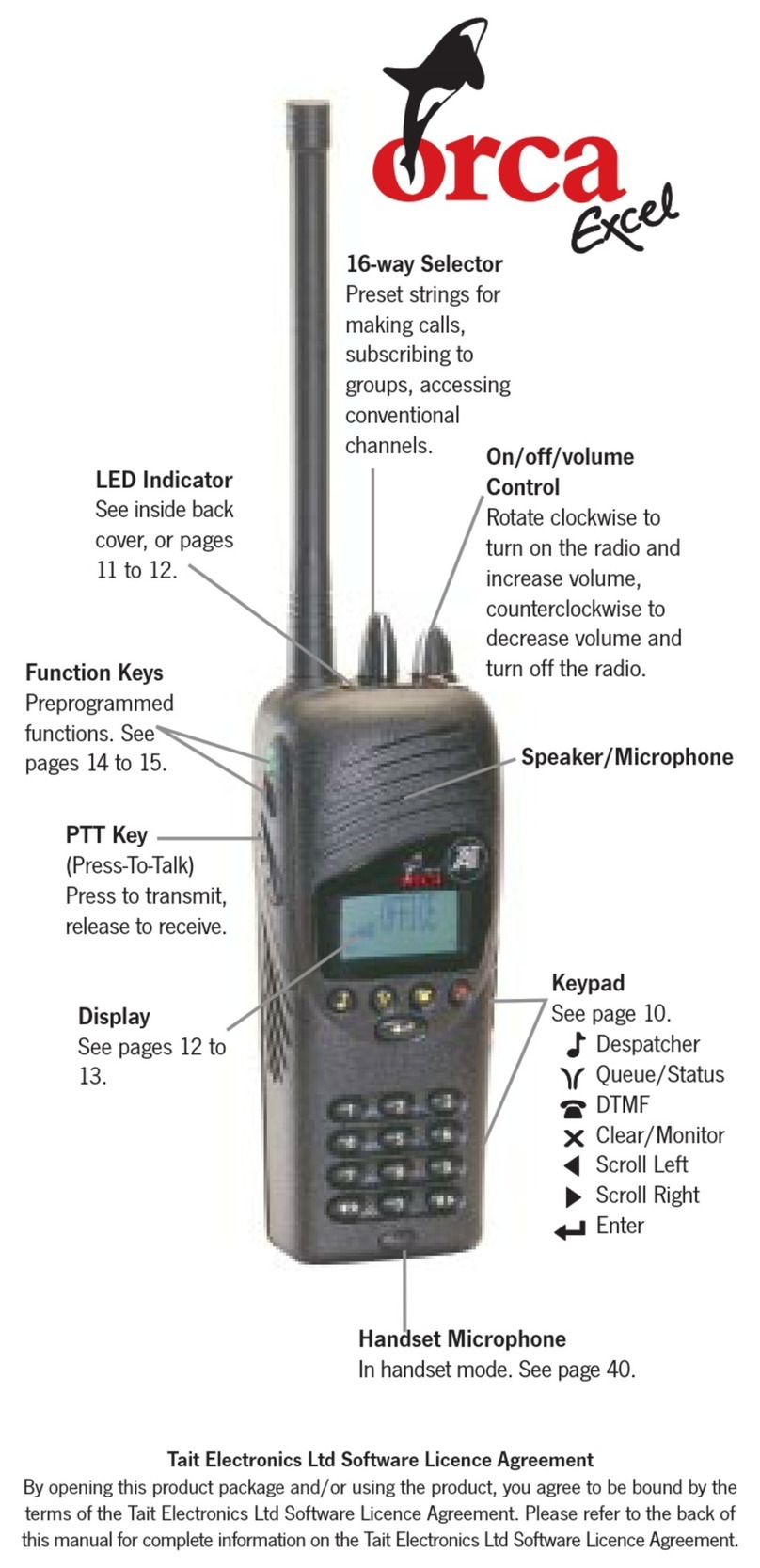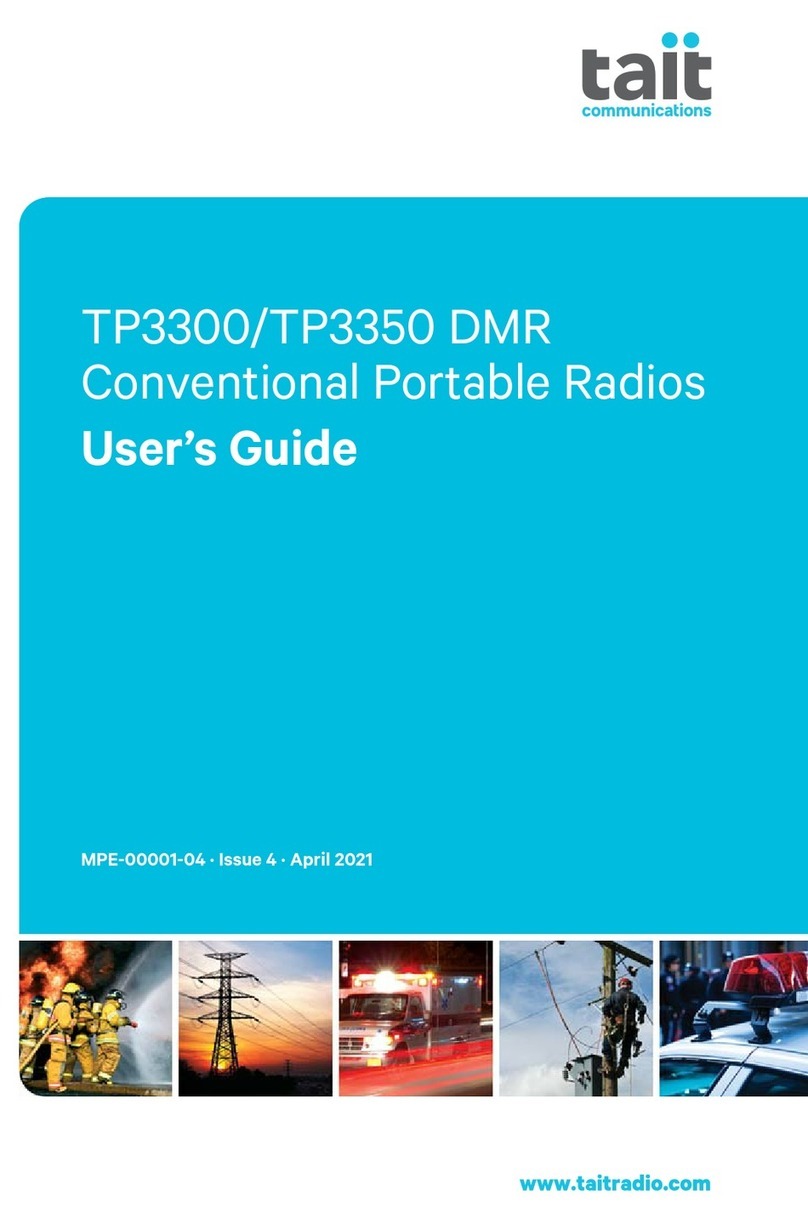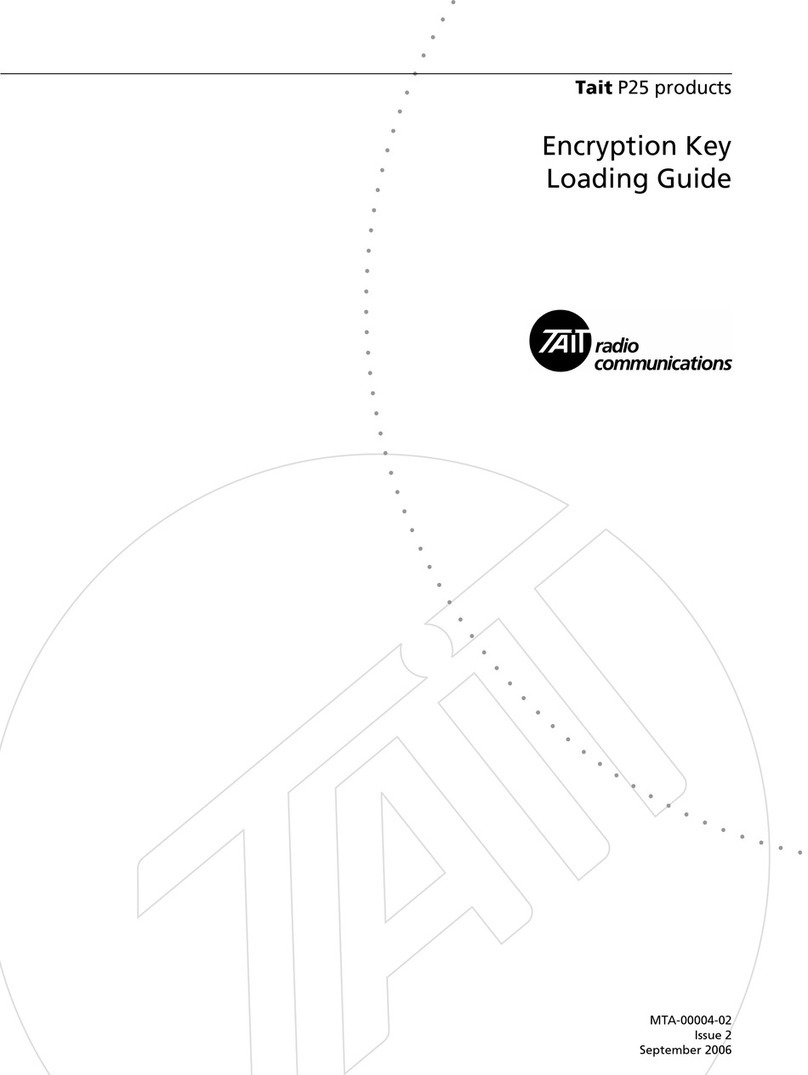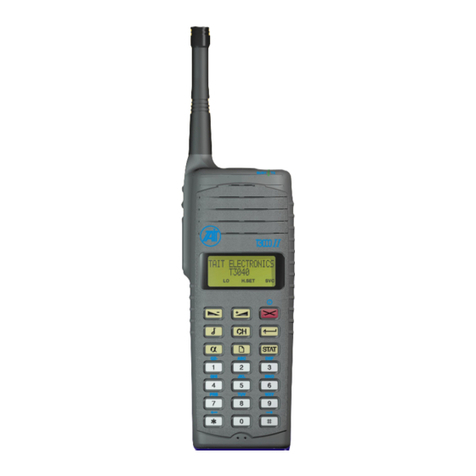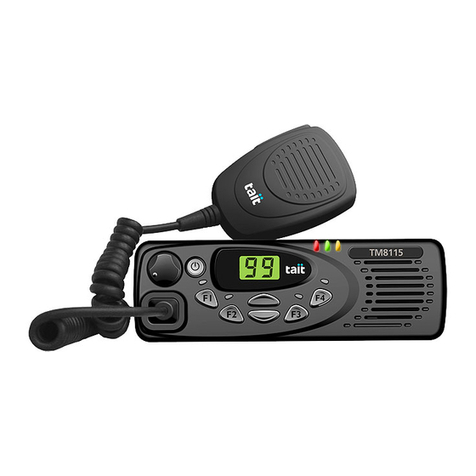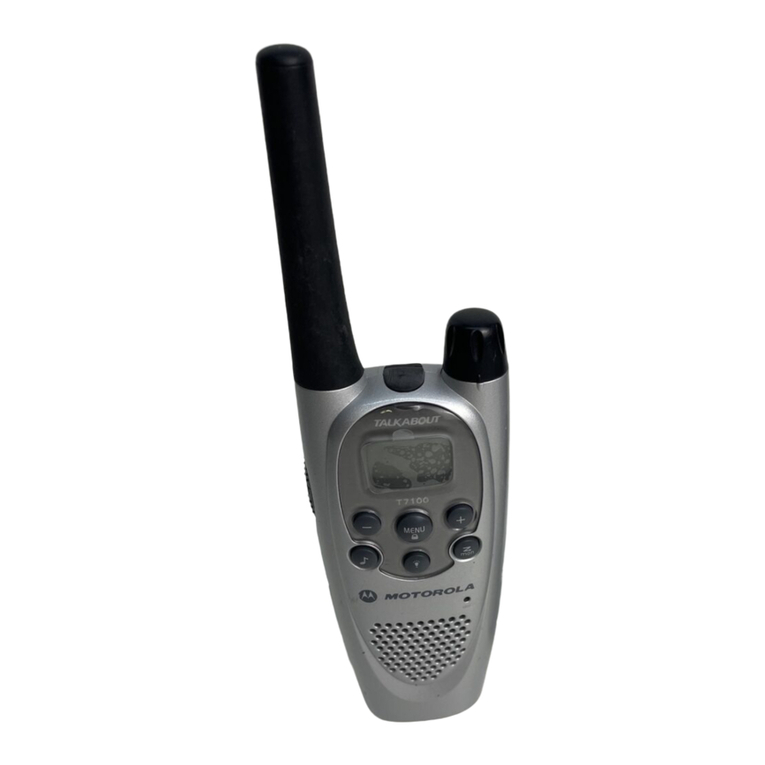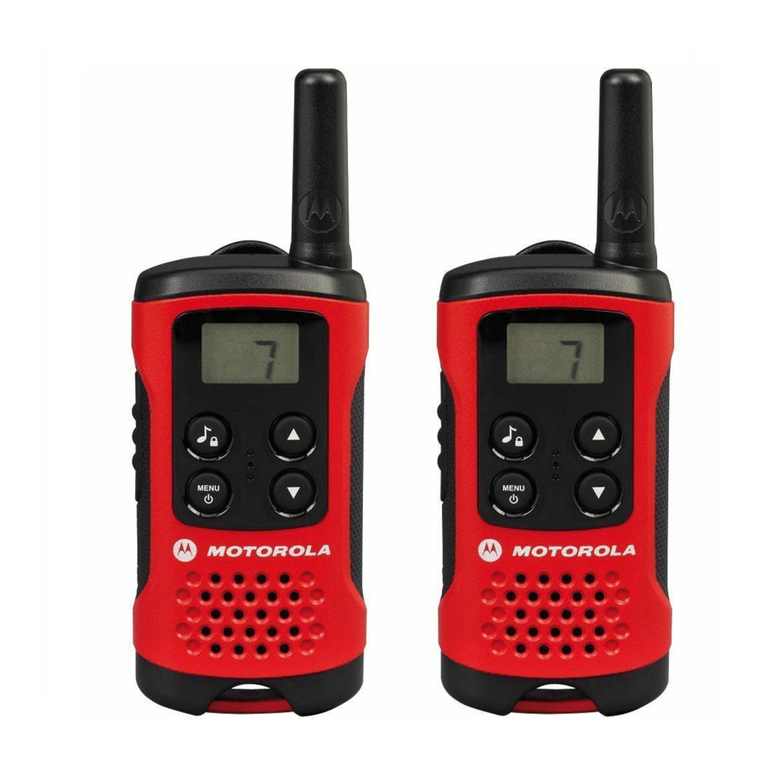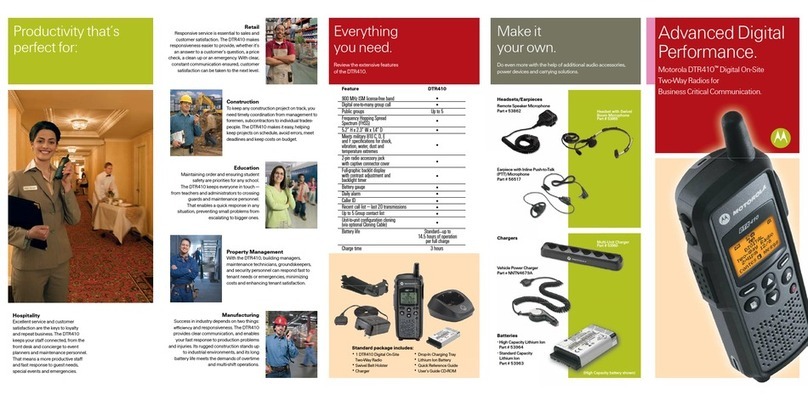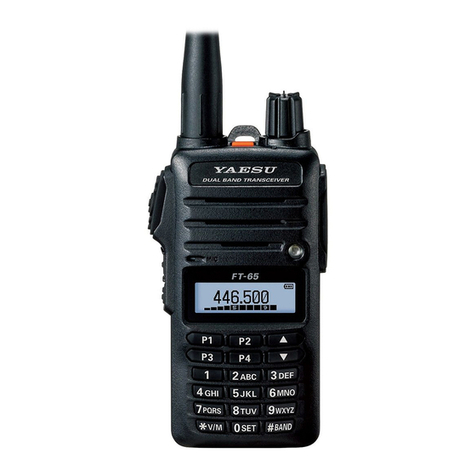Safety warnings
Before using your portable radio, please read the important safety and
compliance information provided with your radio. The safety and
compliance information is also available for download from the Tait
Support website (www.taitworld.com/technical).
• Do not damage the Li-ion battery. A damaged battery can cause an
explosion or fire.
• Battery fluid is corrosive. Avoid contact with the Li-ion battery if it
appears to be leaking.
• Charge the Li-ion battery only in the Tait charger that is specified to
charge it. Discontinue charging that gives off extreme heat or a
burning odour.
• Only use the radio for work-related purposes. It is not authorized for
any other use.
• Do not talk (transmit) on the radio more that the rated transmit duty
cycle of 50%.
• When listening and talking on the radio, hold it upright in front of your
face so that radio and antenna are at least 2.5cm (1 inch) away from
any part of your face. Keeping the radio at the recommended distance
is important because exposure to RF decreases rapidly the further
away the antenna is from your body.
• If you wear your radio, you must always put it in a carrying accessory
that has been specifically approved by Tait for this radio. Using non-
approved body-worn accessories may mean you expose yourself to
higher levels of RF than recommended by the FCC’s occupational/
controlled environment RF exposure limits.
• Ensure you only use Tait-approved antennas, batteries, and acces-
sories.
• Switch off the radio at filling stations or near flammable liquids or
gases.
• Switch off the radio in the vicinity of explosive devices and blasting
zones.
• Switch off the radio before boarding an aircraft.
• Using a radio while driving a vehicle may violate the laws and legis-
lation that apply in your country or state.
• Switch off the radio where it could interfere with electronic devices
such as vehicular electronics systems or medical devices and
equipment.
Status LED indicator
Common LED indications during normal radio operation:
Radio controls Getting started
1. Screw the antenna onto its connector on the top of the radio.
2. Mount the battery onto the back of the radio by sliding it into the
battery holder. (The battery must first be fully charged – see
“Battery charging” on the reverse.)
3. To turn on the radio, turn the volume knob clockwise. The radio
will beep twice.
4. Adjust the volume to a comfortable level, ready to transmit and
receive.
Making a call
1. Select the desired channel on the channel selector.
2. Once the channel is free, hold down the PTT key and speak
clearly into the radio.
3. Identify yourself and the party you are calling using the call signs
you have been assigned.
4. Release the PTT key when you have finished talking.
Receiving a call
Your radio remains quiet until there is valid activity on the channel
your radio is currently on.
1. Select the desired channel on the channel selector.
2. To respond to a call, press the PTT key and talk.
Caution: when transmitting, hold the radio microphone at
least 25mm (1 inch) away from your mouth, and the antenna
at least 25mm (1 inch) away from any part of your body,
particularly your face and eyes.
During a call
1. When speaking, press and hold the PTT key.
2. Release the PTT key for the other party to respond.
Audible tones
The radio uses audible tones to alert you to its status. Some of the
common audible tones are described below:
no LED If the radio is turned on, it is neither transmitting or
receiving.
constant The radio is transmitting
constant The radio is transmitting low power
constant The radio is receiving
flashing The battery is low. Replace with a charged battery.
Antenna The antenna provided with your radio must be screwed
clockwise into the antenna connector before the radio can
be used. No other antenna should be used with this radio.
PTT Press-To-Talk key must be held down while talking. Release
to listen to the other party.
Function key (F1) This may be preset for one of the functions listed on the
reverse.
Function key (F2) This may be preset for one of the functions listed on the
reverse.
Channel selector A rotary switch used to select the desired channel. Your
system administrator will advise which channels to use.
On/off volume Turns the radio on and off and sets the volume for both
voice and audible indicators.
Indicator LED A single LED that lights green, amber and red, depending
upon the radio state. See “Radio indicator LED” on the
previous panel.
PTT
antenna
function key (F1)
function key (F2)
status LED
on/off volume
channel selector
two short beeps The radio is powered on and ready to use
one short beep Function activated using a function key
one short, low pitched
beep
• Invalid keypress
• Low battery
• Channel not programmed
• Function deactivated using the function key
one long, low pitched
beep
Function key not programmed

